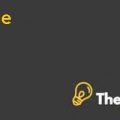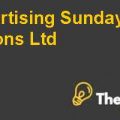
PHAR-MOR SCANDAL Case Solution
Introduction
Phar-Mor was a major discount chain retailer that was founded by Mickey Monus. The company was closed after a major fraud was discovered in the 1990’s. The fraud was conducted by the owner of the company, Mickey Monus and the whole management of the company was involved in it. Also, the auditors of the company Coopers&Lybrant performed negligently and failed to report this fraud.
Phar-Mor, in order to compete with other major discount chain retailers, reduced the price of their products and sold them at such a low price that they were incurring losses. These losses were not reported in the financial statements of the company and instead the management of Phar-Mor and Mickey Monus frequently inflated the inventory of the company and the auditors of the company, Coopers & Lybrants, who negligently performed less work on the inventory, only checked 4 out of 129 stores physically and therefore, they did not gather enough evidence to support the assertions of balance sheets.By inflating the inventory, the management allocated expenses to inventory head which were not incurred in the ordinary course of the business such as personal expenses of the company.
Major Parties
The main parties that were affected by this high level corporate failure are following;
• Employees: As the company was suffering losses, therefore many stores were shut down to reduce these losses and therefore many employees lost fired from their jobs.
• Suppliers: Suppliers were not at all happy with Phar-Mor as they were forced to sell at lower price which resulted in loss making deals and Phar-Mor was also paying its creditors late, therefore suppliers were forced to have high receivables from Phar-Mor.
• Investors: There were two types of investors that invested in the organization;
o Outside Investors:
Investors who had invested in the company and had access to company that were only publically available. They lost their investments when this high corporate fraud came to public knowledge and suffered huge losses.
o Insiders Investors:
Investors whowere also involved in the daily management of the company and had access to information that was not publically available and was price sensitive included Mickey Monus and David Shapiro.These investors were the ones who benefited the most as they received millions in the company’s IPO.
• Management: The management of the company did not have a strong role in this case as they were following Mickey Monus without questioning his actions and therefore, lost their jobs and reputations after failure.
• Auditors: The auditors of the company were Coopers and Lybrants.They were receiving minimum fees on their audit work and therefore, tried to use fewer resources to reduce costs. Their audits were performed negligently by the company and they were not able to detect this fraud in the financial statements of the company.
Weaknesses
The following were the main deficiencies that resulted in such a high corporate failure;
• Inventory Inflation
The company, in order to cover up its millions of losses, charged expenses to inventory head. The expenses were charged to 129 stores in small amounts so that it became hard to detect the frauds.
• Weak System of Internal Control
The company,in order to charge expenses,wrote expense checks.If the company had proper internal control systems in place thenthese fraudulent expenses should have been detected.
• Negligent Auditors
The auditors of the company performed the audit negligently and therefore, did not caught errors that should have led to detection of fraud. The auditors negligently used their resources and did not perform adequate procedures that should have allowed them to detect fraud.
Steps to Detect Inventory Fraud
Inventory fraud includes theft of inventory items and misstatement of records. Inventory consists of raw materials, finished and unfinished goods. Business may engage in fraudulent activities to trick shareholders or to cover up losses. Timely fraud detection and prevention can save your small business time and money.
Step 1- Detect Inventory Theft
Factors that may indicate that inventory is being robbed includes following;
• Missing sales receipts
• Complaints from customers
• Increase in the number of damaged goods
• Quick decrease in sales
To prevent such stealing of inventory, following controls should be in place;
• Storage areas should be locked
• There should be continuous physical or video monitoring of inventory
• Alarm systems should be introduced in warehouses
• Background checks on employees should be performed before appointing them
• Physical audits of inventory should be performed regularly or at least at year end.....................
This is just a sample partial case solution. Please place the order on the website to order your own originally done case solution.








